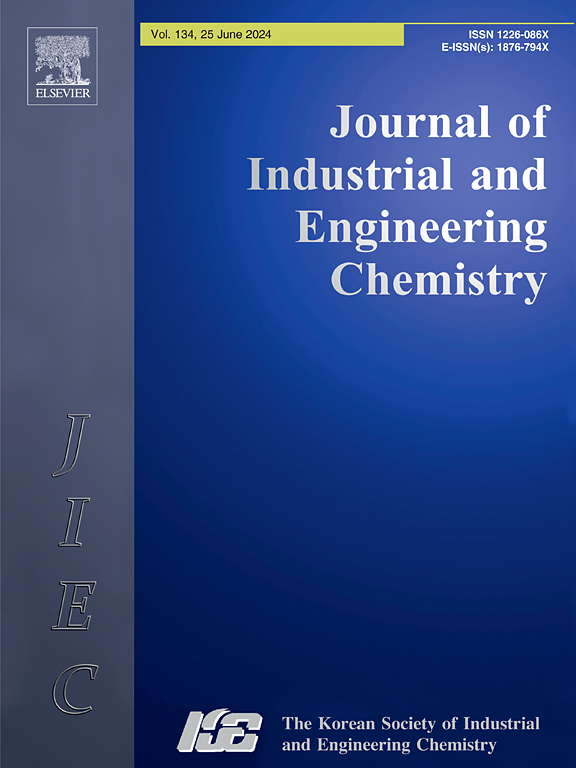An innovative combination of anodic oxidation using Cu/SnO2–Sb2O5 rotating cylinder anode with TiO2 photocatalytic process for treating hospital wastewater
IF 5.9
3区 工程技术
Q1 CHEMISTRY, MULTIDISCIPLINARY
Journal of Industrial and Engineering Chemistry
Pub Date : 2024-10-29
DOI:10.1016/j.jiec.2024.10.064
引用次数: 0
Abstract
Treatment of hospital wastewater was achieved successfully using a novel combined process composed of an anodic oxidation with Cu/SnO2–Sb2O5 rotating cylinder anode and a photocatalysis process with titanium oxide nanoparticles. Cu/SnO2–Sb2O5 anode and TiO2 nanoparticles were characterized by x-ray diffractometer (XRD) and scanning electron microscopy (SEM). The feasibility of the combined process was evaluated using response surface methodology (RSM). Three operating factors were studied namely current density (10–20 mA/cm2), pH (4–8), and TiO2 dosage (0.3–0.7 g/L). Results showed that current density has the major effect on the COD removal with a contribution percent of 40 %. The optimal conditions were current density of 20 mA/cm2, pH of 4, and TiO2 dosage of 0.7 g/L in which COD removal of 91.2 % was achieved with claiming a total electrical energy (EECT) of 39.41 kWh/ m3. An interesting synergistic effect with a synergy of 21.26 % was recognized in the combined process due to the high productivity of hydroxyl radicals resulting from the interaction between the individual processes. Results confirmed that coupling anodic oxidation with photoctalysis is a promising method for treating hospital wastewater.
求助全文
约1分钟内获得全文
求助全文
来源期刊
CiteScore
10.40
自引率
6.60%
发文量
639
审稿时长
29 days
期刊介绍:
Journal of Industrial and Engineering Chemistry is published monthly in English by the Korean Society of Industrial and Engineering Chemistry. JIEC brings together multidisciplinary interests in one journal and is to disseminate information on all aspects of research and development in industrial and engineering chemistry. Contributions in the form of research articles, short communications, notes and reviews are considered for publication. The editors welcome original contributions that have not been and are not to be published elsewhere. Instruction to authors and a manuscript submissions form are printed at the end of each issue. Bulk reprints of individual articles can be ordered. This publication is partially supported by Korea Research Foundation and the Korean Federation of Science and Technology Societies.

 求助内容:
求助内容: 应助结果提醒方式:
应助结果提醒方式:


